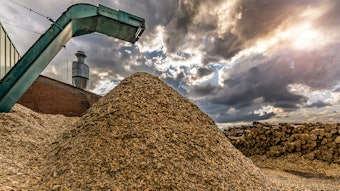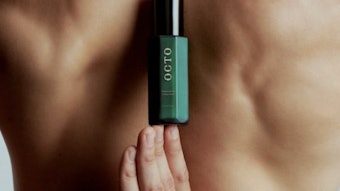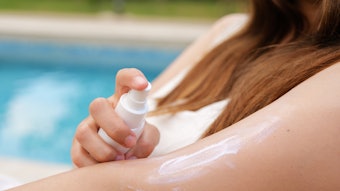
Coral powder (INCI: Coral Powder) has been used in several cosmetic products, being touted as luxurious, unique and exclusive. From an application perspective, it has been used to scrub skin and occasionally associated with supplying trace minerals to it. However, the use of coral powder in cosmetic formulations has declined, mainly due to its animal origin and more recently, to its negative impact on the marine environment. Coral reefs are the habitat for a myriad of fishes, thousands of invertebrates and several plants. Therefore, in countries such as Japan, coral miners are only allowed to source dead stony corals.
Composition and Scientific Value
The search for sustainable coral has mainly been driven by the nutraceutical industry and its demand for natural calcium carbonate in food supplements. Fossilized coral material therefore could present a solution for both the nutraceutical and personal care industries. It contains the high content of elemental calcium (> 40%) sought by the nutraceutical industry and can provide a number of functions in personal care products.
Fossilized, above-ground coral material is derived from the reefs of islands historically located in Japan and more recently identified in the Dominican Republic.1 This fossilized material has been outside the ocean for millions of years, pushed either by geological activity, i.e., crushing plate tectonics, or by residing ocean waters. In the Dominican Republic, the fossilized coral has been identified as Scleractinian coral species and dates back to the late Triassic Era.2
The potential for using fossilized coral powder as a new sustainable material for cosmetic applications is supported by its physical, chemical and textural characteristics, as well as its trace mineral content. Chemically, coral powder is a pure material, composed mostly of calcium carbonate, as shown in Table 1. However, this natural marine coral powder may contain 74 additional trace minerals not found in any other form of calcium carbonate, with the absence of heavy metals. Trace amounts are defined as minerals present in minute but detectable quantities-according to certain investigators, < 0.01%.3
Minerals play major roles in energy production, cellular maintenance and functioning.4 The major minerals playing these roles include calcium, magnesium, phosphorus, potassium, sodium and chloride. The body has a daily requirement for these minerals in excess of 100 mg. Essential and trace minerals also are important, as they are involved in enzymatic reactions or are a part of the enzymes. Among the major minerals present in stony coral powder, calcium (391,000 ppm), magnesium (4,190 ppm), sulfur (1,780 ppm) and silicon (1,280 ppm) are in the highest concentrations.5
Coral minerals possess the natural ability to become ionic upon contact with moisture, such as in a cosmetic solution. If absorbed by the skin, they also can influence skin's physiology.6 In particular, calcium has been associated with differentiation and wound healing. It is also a key factor in maintaining skin barrier, and in epithelialization and repair.4, 7-9
Magnesium has astringent properties when provided as magnesium silicate (talc). In its elementary form, it is important as a cofactor in enzymatic reactions, as an energizer. And in addition to calcium, magnesium plays a key role in skin healing and differentiation.9, 10
Sulfur is a major component of amino acids such as cystine, cysteine and methionine, but it also is involved in the synthesis of keratin in skin, hair and nails. It is further important in the synthesis of glutathione.11 In dermatology, it is used for its antimicrobial, anti-fungal and keratolytic activities, and to address issues such as acne, rosacea, seborrheic dermatitis and dandruff.12
Finally, silicon has been described as an essential element for building collagen, but also to maintain structural integrity of nails, hair and skin.13, 14 Additional trace minerals in coral powder, although in minute amounts, i.e., between 510 ppm and 0.005 ppm, depending on the mineral,5 could contribute to essential reactions for skin homeostasis.
Sourcing and Processing
Fossil coral is coarsely ground, heated, disinfected and ground again into several different grades of powder. Since its main use is for nutraceutical applications, processing in the United States often follows the U.S. Food and Drug Administration's (FDA) current Good Manufacturing Practices (cGMP) or ISO 9000 in facilities approved by the FDA. In addition, some coral is ground to a very fine powder, up to 18 µm, for use as talc, which can partially dissolve in water. As noted, by sourcing the fossilized coral from mines or shores, the environment is not harmed.
Cosmetic Applications
Coral powder can be produced with different particle sizes; commercially available powders range from 850 µm to 4 µm. It is also important to note that the molecular structure of fossil coral powder is different from synthetic calcium carbonate (see Figure 1). In addition, the different granulometries available with fossil coral powder allow for varying textures in different applications, but also may affect its chemical and physical properties, such as solubility. The largest particle size, although irregularly shaped, has applications for skin scrubbing and exfoliation. The smallest particles could be used in cleansing and whitening toothpaste, or as an opacifier in eye shadows and foundations. Further similarities to titanium dioxide prompt the use of fossil coral powder as a filler, as well as a whitening agent in lipstick, foundations, eyeshadow and face masks.
As noted, the powder's properties and texture are similar to talc, presenting opportunities for its use as an astringent and sebum absorber. Furthermore, water-based applications provide the possibility of transforming the powder trace minerals into ionic form, which when absorbed by the skin, could deliver added benefits.
Conclusion
Fossil coral powder is an interesting material with sensorial, functional and physiological properties. Although it mainly is used for nutritional products, its increased application in personal care products can be envisioned. The possibility to obtain powders with different granulometry increases coral powder's range of applications and brings different functionality and characteristics. Its natural origin would also be well-accepted by personal care product developers looking for alternatives to synthetic products; as an example, as a substitute for synthetic exfoliants such as polyethylene.
By sourcing the powder from origins above sea level, the impact on the sea ecosystem is eliminated. It therefore is not subject to the restrictions of the Convention on International Trade in Endangered Species of Wild Fauna and Flora. It also can be used without regulatory restrictions. However, its origin from dead coral raises the question of sustainability and sourcing over time, especially if the demand were to increase. Although this issue is not fully debated among scholars, alternative sourcing could potentially include coral farming and coral lifecycle assessment. Fossil stony coral has been sourced since the 1950s, especially in the Asia-Pacific region, thus sustainability programs must be implemented to insure a balanced supply chain.
Fossil coral powder is a promising material for personal care applications, and its use will increase in natural products as the demand for alternatives to synthetics with proven safety and functionality increases.
References
- Agriculture/Mining, DR1.com, http://dr1.com/business/sectors/agri-mining.shtml (accessed Jul 10, 2014)
- A Budd, DF McNeill , JS Klaus, A Lopez Peres and F Geraldes, Paleoecology and sedimentology of ancient coral reefs in the Dominican Republic, workshop at the University Santo Domingo (Mar 16-17, 2006) http://porites.geology.uiowa.edu/DRworkshop/Guidebook-eng2.pdf (accessed Jul 10, 2014)
- HA Schroeder, The Trace Elements and Man, Devin-Adair Co., Old Grenwich, CT, USA 180 (1973)
- TG Polefka, RJ Bianchini and S Shapiro, Interaction of mineral salts with the skin: A literature survey, Int J Cosmet Sci 34(5) 416-423 (2012)
- BW Halstead, Fossil Stony Coral Minerals and Their Nutritional Application, Health Digest Publishing Company, Cannon Beach, OR, USA, 25 (1999)
- AB Lansdown, Physiological and toxicological changes in the skin resulting from the action and interaction of metal ions, Crit Rev Toxicol 25(5) 397-462 (1995)
- CL Tu and DD Bikle, Role of the calcium-sensing receptor in calcium regulation of epidermal differentiation and function, Best Pract Res Clin Endocrinol Metab 27(3) 415-427 (2013)
- MJ Behne and JM Jensen, Calcium in epidermis, Adv Exp Med Biol 740 945-953 (2012)
- M Denda, New strategies to improve skin barrier homeostasis, Adv Drug Deliv Rev 54(Supp 1) S123-130 (2002)
- M Denda, C Katagiri, T Hirao, N Maruyama and M Takahashi, Some magnesium salts and a mixture of magnesium and calcium salts accelerate skin barrier recovery, Arch Dermatol Res 291(10) 560-563 (1999)
- SC Lu, Glutathione synthesis, Biochim Biophys Acta 1830(5) 3143-3153 (2013)
- AK Gupta and K Nicol, The use of sulfur in dermatology, J Drugs Dermatol 3(4) 427-431 (2004)
- Martin KR, Silicon: The health benefits of a metalloid, Met Ions Life Sci 13 451-473 (2013)
- AB Lansdown and A Williams, A prospective analysis of the role of silicon in wound care, J Wound Care 16(9) 404-407(2007)










